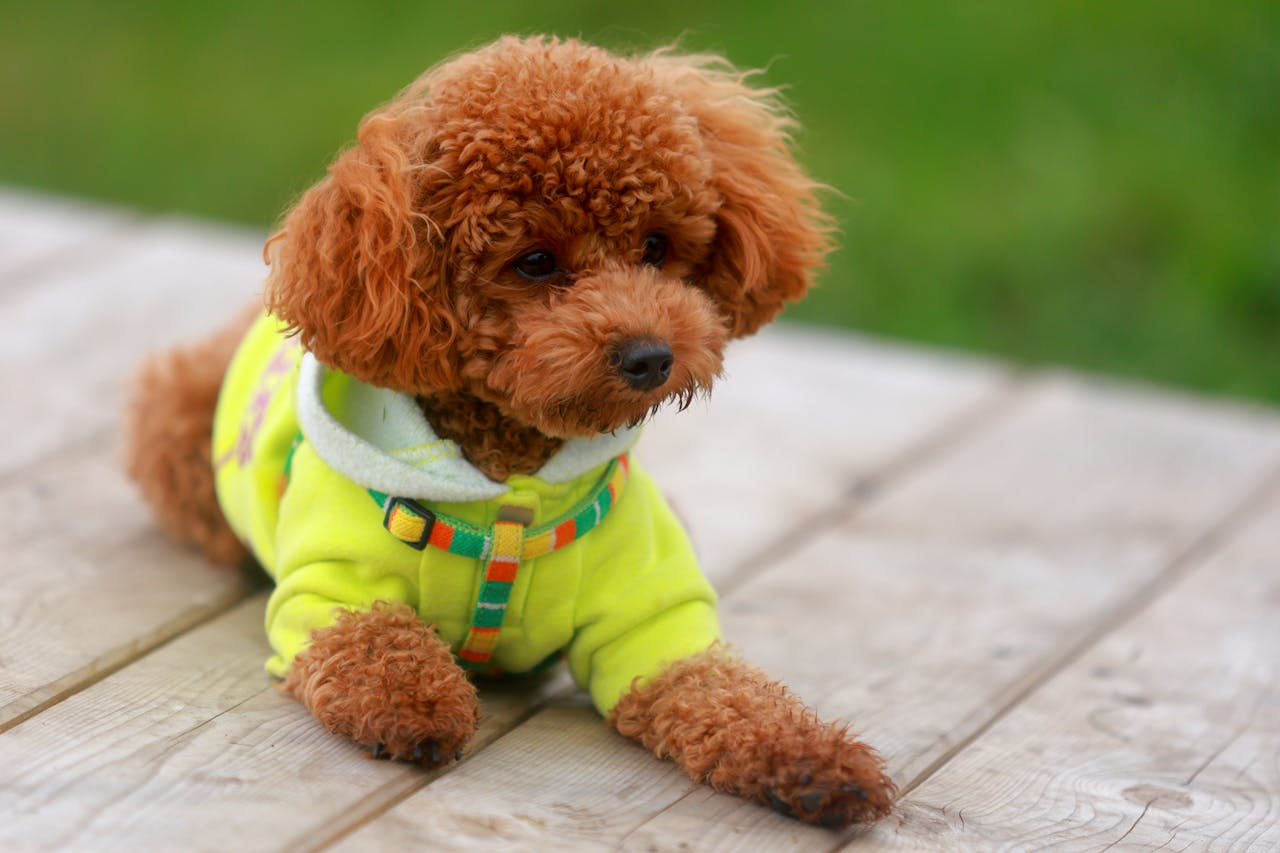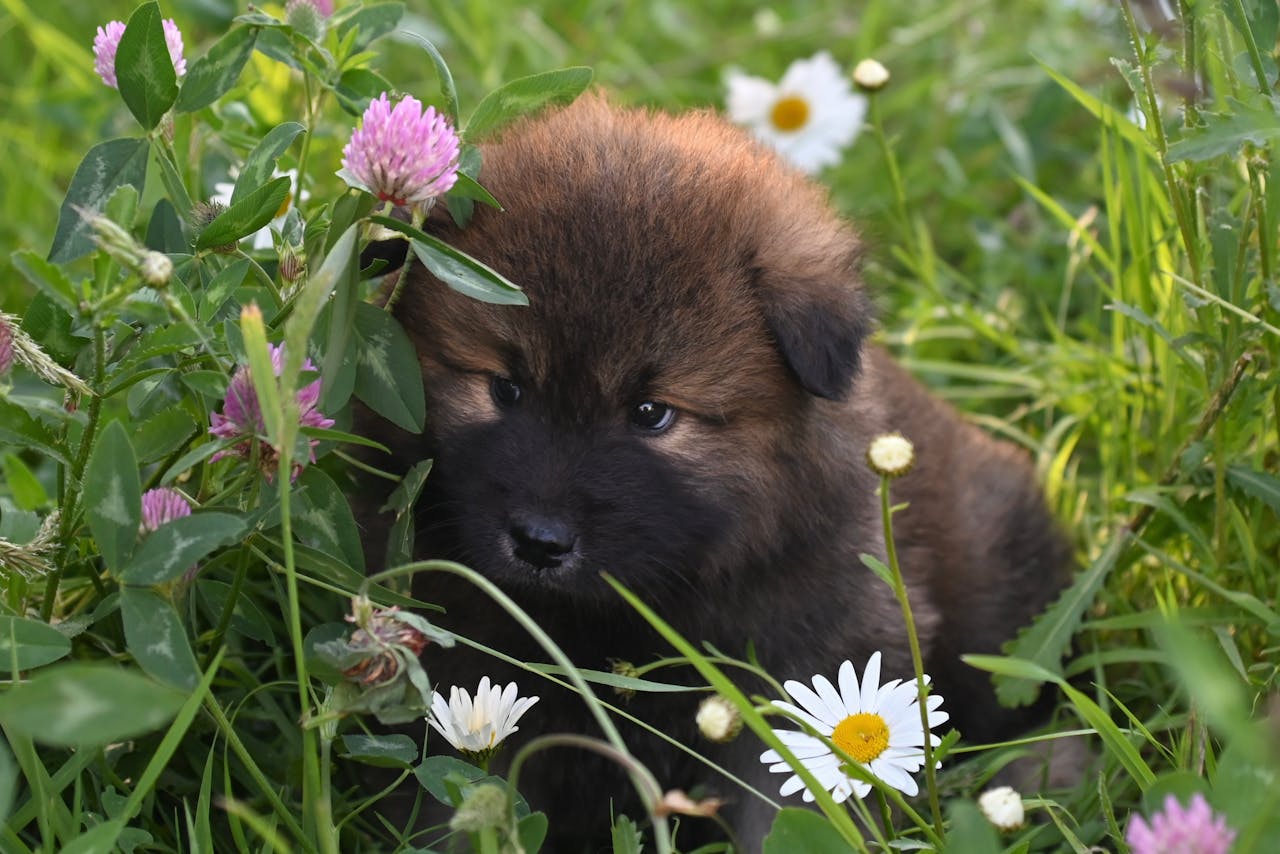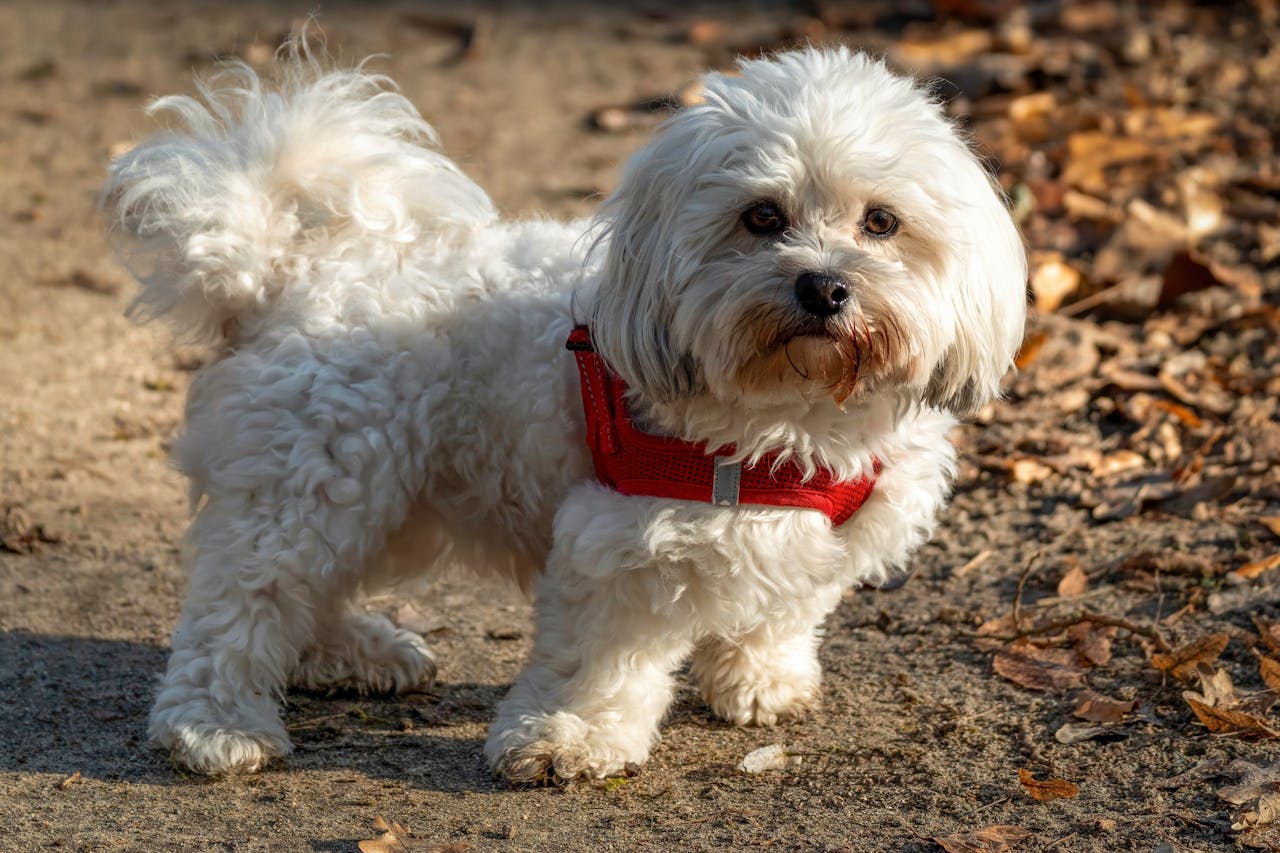5 Powerful Ways to Build Confidence in Shy Puppies
Have you ever noticed how some puppies hide behind their owner’s legs at the slightest unfamiliar sound? Shyness in puppies can be more than a quirk; it’s a common challenge with 20% of dogs experiencing some level of fear and anxiety, making early intervention crucial. Exploring effective ways to build their confidence can turn a timid pup into a happy, well-adjusted dog.
Establishing a routine can create a safe environment, promoting comfort and predictability. Positive reinforcement, through rewarding social interactions, forges a mental pathway for overcoming fear.
Related Article: Calm an Anxious Dog: 7 Proven Ways to Ease Thunderstorm Fear
Gradual exposure to new experiences, alongside professional guidance, can lead to noticeable improvements in a pup’s confidence levels, as studies have shown a 50% decrease in anxiety behaviors through consistent training approaches.
- Consistent socialization with different people and pets fosters familiarity.
- Positive reinforcement using treats and praise encourages desired behaviors.
- Regular training sessions build obedience and understanding.
- A safe, comfortable environment ensures security and trust.
- Gradual exposure to novel experiences reduces fear and boosts adaptability.
5 Powerful Ways to Build Confidence in Shy Puppies
One effective way to build confidence in shy puppies is through consistent socialization. Introducing them to new people and pets helps reduce fear. Gradually increase the exposure to different environments. Puppies can learn to be more comfortable and calm. Regular socialization transforms their apprehension into curiosity.
Positive reinforcement is another powerful method. Rewarding your puppy with treats and praise when they exhibit confident behavior can encourage them. This reinforces the idea that being brave has positive outcomes. It’s crucial to be patient and consistent. Small steps lead to big improvements over time.
Creating a safe and comfortable environment is essential for boosting a puppy’s confidence. This means providing a secure space where the puppy feels protected. A quiet, cozy area helps reduce stress and anxiety. Familiar toys and blankets can also offer comfort. Stability and routine give puppies a sense of control.
Gradual exposure to new experiences is the key to helping puppies overcome their fears. Start with less intimidating activities and slowly introduce more challenging scenarios. For instance, short car rides can eventually lead to longer trips. Each new experience broadens their comfort zone. With time, they’ll handle new situations with more assurance.
Socialization Skills: Introducing New People and Pets
Introducing shy puppies to new people and pets can be challenging but rewarding. Start with calm, friendly individuals and relaxed pets. Gradually increase the interaction time. Positive experiences build trust and reduce fear. Reinforce each introduction with a reward to encourage confidence.
Using a variety of settings helps puppies adapt better. Practice socialization at home, in parks, and on casual walks. Each new environment presents unique opportunities to learn. This flexibility is key for building solid social skills. Puppies become more adaptable and relaxed over time.
Watch for signs of anxiety and take breaks when needed. If a puppy shows fear, give them space. Let them approach new people or pets on their own terms. Pushing too hard can increase anxiety. Always prioritize the puppy’s comfort and feelings of safety.
Consistency is crucial in socialization efforts. Regular and repeated interactions build familiarity. Scheduling daily socialization activities can reinforce positive behavior. This consistency helps the puppy understand what to expect. Over time, they will develop better confidence in various social situations.
Positive Reinforcement Techniques
Positive reinforcement is a powerful tool in training shy puppies. Rewarding good behavior encourages them to repeat it. Use treats, praise, or toys to show approval. Puppies quickly learn to associate positive outcomes with their actions. Consistency is crucial to reinforce desired behaviors.
Timing matters when using positive reinforcement. Immediate rewards after a good behavior improve understanding. The puppy connects the reward with the action they just performed. Delayed rewards can confuse them. Instant feedback makes learning faster and more effective.
Incorporating a variety of rewards keeps puppies engaged. Some respond better to food treats, while others may prefer affection or play. Mixing rewards caters to individual preferences. This approach keeps the training exciting and motivating. It helps maintain the puppy’s interest and enthusiasm.
Avoid negative reinforcement as it can lead to anxiety. Positive methods create a supportive learning environment. Stress-free experiences boost confidence levels. Celebrate small steps, as each success builds a foundation for growth. A happy, confident puppy is the ultimate goal.
Consistent Training Sessions
Consistent training sessions are vital for building confidence in shy puppies. Regular practice helps them understand what is expected. It also reinforces positive behaviors. Short, frequent sessions work best. This approach maintains the puppy’s attention and interest.
Creating a set schedule benefits both the puppy and the owner. A routine provides structure, making training predictable. This predictability helps reduce anxiety. Every training session should include familiar commands and introduce new ones. The combination of repetition and novelty supports balanced learning.
Using varied training environments enhances the effectiveness of the sessions. Training in different places exposes puppies to new stimuli. This variety helps generalize learned behaviors. It prepares them for real-world situations. Puppies become adaptable and confident through diverse experiences.
Rewards should be immediate and consistent to reinforce learning. Consistent rewards make it clear what behaviors are desired. Keep the rewards varied to maintain motivation. Puppies respond well to a mix of treats, praise, and play. This diversity keeps the training exciting.
It’s important to keep sessions positive. End each training on a good note, celebrating progress. Positive endings leave puppies eager for the next session. Notice and praise their efforts. Consistent encouragement boosts their confidence.
Common training sessions can include commands like sit and come. Gradually increasing the difficulty level helps puppies advance. Training should always match the puppy’s skill level. Proper pacing prevents frustration. Successful training builds a strong foundation for confident behavior.
Building a Safe and Comfortable Environment
Creating a safe and comfortable environment for shy puppies is essential. Start with a dedicated space just for them. This area should be quiet and free from high traffic. Cozy blankets and familiar toys add to the sense of security. Puppies feel more at ease with a familiar place to retreat to.
Consistency in the puppy’s environment helps build confidence. Keeping a routine, such as feeding and playtime, at the same times each day provides predictability. Predictable schedules reduce stress and promote stability. Puppies thrive in environments where they know what to expect. Stability supports their psychological well-being.
Introducing comforting sounds can enhance their sense of safety. Soft music or white noise can mask sudden loud noises. These background sounds create a calming atmosphere. Reducing fear triggers helps shy puppies feel more relaxed. A calm environment is conducive to their confidence-building.
Gradually introducing new elements into their safe space helps them adjust to changes. Start with small changes, like adding a new toy or blanket. Slowly increase the complexity of their environment. This approach helps them adapt without feeling overwhelmed. Controlled changes support their growth and confidence.
Avoiding harsh lighting and providing adequate shelter adds to the comfort. Natural light during the day can be soothing. Ensure the puppy’s area is free from drafts and extreme temperatures. Comfortable physical conditions contribute to a sense of security. A well-sheltered puppy is a happy puppy.
Finally, consider pheromone diffusers designed to reduce anxiety in dogs. These products mimic natural calming scents. They can be particularly effective for very nervous puppies. Less anxious puppies are more open to new experiences. Ensuring comfort in their environment fosters a confident, well-adjusted pet.
Gradual Exposure to New Experiences
Gradual exposure to new experiences is crucial for helping shy puppies gain confidence. Start with simple, everyday activities. A short walk around the neighborhood can introduce them to new sights and sounds. Slowly increase the complexity of these experiences. Each new encounter helps build assurance and curiosity.
Introducing puppies to different environments prepares them for varied situations. Visit different types of places like parks, pet stores, and friends’ homes. Each location offers unique stimuli to explore. Time spent in diverse environments broadens their understanding. Exposure helps reduce fear and encourages adaptability.
Varied social interactions are also important. Meeting different people and other animals introduces the puppy to diverse personalities. Use these meetings to reinforce positive behaviors. Rewards for calm behavior teach them to view new encounters positively. Over time, they become more outgoing and social.
Use a table to chart their progress, noting any challenges or breakthroughs:
| Experience | Reaction | Progress Made |
|---|---|---|
| Walk in park | Nervous initially | Calmed after a few minutes |
| Meeting a new dog | Hesitant but curious | Approached and sniffed |
| Riding in a car | Anxious at start | Relaxed after some time |
Consistency in gradual exposure strategies is key. Regularly introducing new activities allows puppies to adjust at their own pace. Always ensure that transitions are gentle and supportive. A steady approach prevents overwhelming them. Confidence builds as they learn to manage new experiences with ease.
Patience and reassurance from the owner make a huge difference. Praise small victories and provide comfort during challenging moments. Let the puppy know they are safe. Supportive actions encourage them to keep exploring. This trust leads to lasting confidence and happiness.
Understanding the Importance of Puppy Confidence
Puppy confidence plays a vital role in their development and wellbeing. Confident puppies are more likely to explore their surroundings. This exploration leads to learning and growth. They adapt better to new situations, making them less prone to fear-related behaviors. A confident puppy is generally happier and healthier.
Building confidence in puppies helps prevent behavioral issues later in life. Fearful puppies may develop aggression or anxiety as they mature. These problems can be hard to correct if not addressed early on. Early confidence-building activities lay the groundwork for well-adjusted adult dogs. Taking the time now pays off in the future.
A confident puppy tends to have stronger social skills. They interact more easily with other animals and humans, reducing stress during social encounters. Being open to meeting new friends enriches their life experiences. It also makes owner outings more enjoyable. Social ease fosters positive relationships throughout their life.
The benefits of puppy confidence extend beyond personal development:
- Reduces vet visit stress
- Improves obedience training success
- Lowers risks of separation anxiety
Owners play a crucial role in fostering this confidence by providing support and opportunities for learning. Simple actions like offering praise or engaging in play can enhance a puppy’s self-assurance. Owners become trusted guides as puppies face new challenges together. This bond is fundamental to building lasting confidence.
Creating an environment that encourages curiosity ensures continuous growth. Safe spaces where puppies can explore at their own pace foster courage and resilience. As they navigate new obstacles, each small victory boosts their belief in themselves. Confidence flourishes when nurtured patiently but persistently.
Recognizing Signs of Shyness and Anxiety in Puppies
Identifying shyness and anxiety in puppies early is crucial for fostering confidence. Common signs include hiding or cowering when approached. Some puppies may tremble or refuse to make eye contact. They might also avoid engaging in play, preferring solitude instead. Recognizing these behaviors is the first step to helping them overcome their fears.
During walks, anxious puppies often exhibit certain behaviors. They may stop frequently, freeze, or try to retreat. Sudden noises or unfamiliar sights can trigger these reactions. Observing your puppy’s responses while outside can offer insights into their anxiety triggers. Understanding these signs enables owners to address issues appropriately.
Table of anxiety signs and corresponding actions:
| Anxiety Sign | Recommended Action |
|---|---|
| Hiding | Provide a safe space |
| Excessive Barking | Use calming techniques |
| Pacing | Offer reassurance and comfort |
Social interactions can also reveal anxiety. Puppies that shy away from other dogs or humans may be displaying fear-based behaviors. They might bark excessively or growl as a defense mechanism. Learning to interpret these signals helps in tailoring socialization approaches. Gentle introductions to new friends reduce stress.
Physical signs are often present in shy puppies, too. Look for lowered tails, flattened ears, and tense bodies. These cues indicate discomfort or fear in their environment. Addressing the source of their anxiety and providing comfort is key. Positive reinforcement strengthens their ability to handle stressful situations confidently.
Shy puppies benefit greatly when their signs of anxiety are recognized and managed promptly. Tailoring interactions based on these signals encourages trust and reduces stress. Observant owners can create strategies that foster growth. Addressing each sign with care and patience helps guide them toward a more confident future.
Role of a Trainer in Building Puppy Confidence
The presence of a skilled trainer can significantly impact a puppy’s confidence development. Trainers bring experience and understanding to tailor methods suited for individual puppies. They assess each puppy’s unique needs and design activities that encourage growth. A trainer’s expertise helps puppies engage positively with their environment. This guidance creates a safe space for learning and experimentation.
Trainers use various techniques to build confidence in puppies. Positive reinforcement is a popular method, rewarding puppies for desirable behavior. Sessions are designed to be engaging and rewarding, making learning enjoyable. Trainers use treats, toys, and praise to motivate and encourage participation. This approach builds trust and boosts self-esteem in puppies.
Structured training sessions provide consistency, which is crucial in a puppy’s development. Consistent routines reduce anxiety and build familiarity with expected behaviors. Trainers set realistic goals and guide puppies towards achieving them. This step-by-step progress instills a sense of achievement. Puppies learn to anticipate and adapt to structured tasks confidently.
Interacting with a group in a class setting provides socialization opportunities under professional supervision. Puppies learn to interact with others in a controlled environment. Trainers facilitate safe, productive interactions, making socialization less intimidating. This controlled setting helps puppies learn social cues and build relationships. Social confidence is a natural outcome of these interactions.
A trainer’s support extends beyond the training sessions into guidance for pet owners. Trainers offer advice on maintaining consistent practices at home. They provide insights into reinforcing concepts learned in training classes. This continuity ensures that puppies receive consistent messaging, strengthening their new skills. Owner involvement amplifies the positive effects of professional training.
Investing in a trainer is crucial for any pet parent aiming to build their puppy’s confidence. Their role in setting a solid foundation of skills is invaluable. They offer a balance of challenge and encouragement that fosters growth. With their help, puppies become well-rounded and self-assured. Their expertise lays the groundwork for lifelong confidence.
Frequently Asked Questions
Shy puppies can experience a range of behaviors due to their lack of confidence. Below are some common questions and helpful answers to better understand and support them.
1. How do I recognize if my puppy is shy?
Shy puppies often avoid eye contact and hide during new experiences. They might also tremble, urinate when scared, or refuse to engage in play. These signs indicate they might be feeling anxious or fearful.
Watching your puppy’s body language is key. A lowered tail, flattened ears, and avoiding social interaction can all be indicators of shyness. Recognizing these signs early helps in taking the right steps to build their confidence.
2. What are some safe ways to socialize my shy puppy?
Introduce your shy puppy to calm, friendly individuals and pets gradually. Start with controlled, positive encounters to build trust. Having a supportive and gentle approach will make the puppy feel safe and less overwhelmed.
Using treats and praise during socialization reinforces good behavior. Gradually increase the social interactions and environments. This slowly builds their confidence in meeting new friends and experiencing different places.
3. Why is positive reinforcement important for shy puppies?
Positive reinforcement encourages shy puppies to repeat desired behaviors. Rewards like treats, toys, or praise make them associate these actions with positive outcomes. This approach helps build their confidence over time.
Negative reinforcement can increase fear and anxiety. By focusing on positive reinforcement, you create a supportive environment. Puppies learn to take brave steps knowing they will be rewarded, thus slowly overcoming their shyness.
4. How can creating a safe environment help my puppy?
A safe environment makes shy puppies feel secure and reduces anxiety. Providing a quiet space with familiar items like toys or blankets can comfort them. Having a predictable routine also helps them feel more in control.
Comfort and stability are crucial for building confidence. When a puppy feels secure, they are more likely to explore and engage in training. This sets the foundation for developing their confidence and reducing fearful behaviors.
5. How does gradual exposure to new experiences benefit shy puppies?
Gradual exposure helps shy puppies adapt to new situations without feeling overwhelmed. Start with small, manageable challenges, and slowly increase the complexity. This helps them build tolerance and reduces fear.
Each new experience should be positive and rewarding. Celebrating their little achievements along the way encourages them to keep trying. Over time, their confidence grows, and they become more comfortable with changes and new environments.
Conclusion
Building confidence in shy puppies is an essential and rewarding journey. Through consistent socialization and positive reinforcement, puppies learn to navigate their world with courage. Gradually introducing new experiences helps them adapt and reduces fear, paving the way for well-adjusted adulthood.
A supportive and safe environment is crucial for nurturing their growth. Setting a routine builds stability and assurance in their daily life. With patience and commitment, owners can guide these adorable companions towards a more confident, fulfilled existence. This process ensures a lasting bond and a happier future together.









